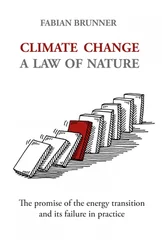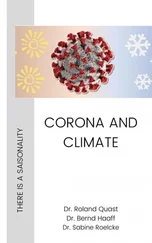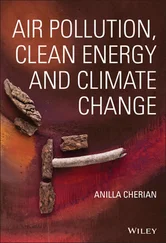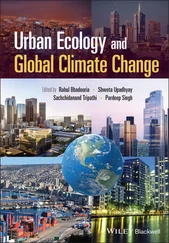This chapter is concerned with possibilities and challenges of syntheses that might inform the UNFCCC process (and we hope other national and international activities) with specific respect to adverse effects inflicted by extreme weather events. It is not intended to provide a synthesis assessment itself, a major multidisciplinary endeavor. Why the focus on extreme weather? Does it matter whether impacts are a consequence of extreme weather rather than of other manifestations of anthropogenic climate change?
Much contemporary risk management focuses on reducing exposure and vulnerability to, and increasing resilience against, natural disasters. Infrastructure is designed to withstand certain thresholds of extreme weather, and insurance is purchased as a hedge against damage from uncertain but plausible extreme weather. Thus one possible lens for defining “dangerous” is through the definition implicit in current design specifications and in what is considered affordable levels of insurance: in other words, through risks associated with extreme weather. So, to answer the question from the previous paragraph, for some purposes it may indeed be relevant to focus on impacts that are a consequence of extreme weather. This point features in reports from the Intergovernmental Panel on Climate Change (IPCC), the international body tasked with assessing current understanding of anthropogenic climate change in order to inform the UNFCCC process. In its 2001 report, the IPCC identified five “reasons for concern” (RFCs), each “consistent with a paradigm that can be used … to help determine what level of climate change is dangerous” (Smith et al., 2001, p. 915). These RFCs have continued to provide synthesizing structure through to the most recent reports (Cramer et al., 2014; Hoegh‐Guldberg et al., 2018; Oppenheimer et al., 2014; Smith et al., 2009). One of these RFCs is the relationship between anthropogenic climate change and risks associated with extreme weather events.
In keeping with the use of the RFCs as summary measures for informing the UNFCCC process, this chapter focuses on understanding how synthesis assessments might provide status updates on risks associated with extreme weather events. In particular, the chapter will concentrate on understanding the detection and attribution of recent impacts, that is, evaluating the combined evidence from monitoring and system understanding, including their comparison, in order to document how anthropogenic emissions have already affected various aspects of human, managed, and natural systems around the world via extreme weather. A benefit of the focus on detection and attribution is that it highlights the role of monitoring. Implications for predicting future changes in risk will be discussed at the end, including the role of continued documentation of impacts for monitoring progress toward the UNFCCC objective. One thing to note at this point, though, is that analysis of the past considers impacts, that is, the outcomes of certain risks, whereas in the future we can consider only the risks themselves. For simplicity, in this chapter we will tend to consider impacts, outcomes, and risks to be different facets of the same thing.
The chapter consists of three further sections. The next (second) section will examine various steps involved in generating a synthesis assessment, particularly focusing on challenges. The third section will then review the single existing synthesis assessment of past changes in risk associated with extreme weather. That assessment was conducted as part of the chapter on “Detection and Attribution of Observed Impacts” in the IPCC Fifth Assessment Report (Cramer et al., 2014) in order to document current understanding of the “risks associated with extreme weather events” (their section 18.6.4). Other synthesis approaches will also be mentioned, but as yet they have not been applied to the specific topic of the impacts of extreme weather. The final section will describe implications for predicting future global, cross‐sectoral, extreme‐weather‐related risk.
1.2. OF TRUTHS AND TRIVIALITIES
Niels Bohr, one of the pioneers of quantum mechanics, used to say that it was the task of science to reduce deep truths to trivialities (Pais, 1991). When it comes to informing climate policy, however, the opposite might be a more useful dictum. A substantial component of current disagreement over the impacts associated with extreme weather events comes from a lack of clarity over what is meant by impacts of extreme weather events. This means that trivialities about natural hazards, such as that more intense hurricanes have the potential to induce more damage than do weaker hurricanes, are often taken as truths about impacts of climate change. But the truth is a much more complicated amalgam of weather hazard, policy, economics, community organization, and just plain luck. Understanding this truth will be easier if we clarify exactly what question interests us, what possible tools we have for exploring that question, and what challenges we face in applying those tools. This section discusses some of these issues.
1.2.1. Weather Extremes or Impact Extremes?
We will start first with the distinction between weather and impacts (of weather). Although the distinction is generally commonly understood for long‐term impacts of long‐term climate changes, this is not the case with extremes. Extreme weather is often confused with natural hazards. For instance, in its review titled Attribution of Extreme Weather Events in the Context of Climate Change, the US National Academy of Sciences in fact considered natural hazards including floods and wildfires (National Academies of Sciences, Engineering, and Medicine, 2016). However, in the most recent IPCC assessment report, floods and wildfires are considered to occur outside of the climate system in the hydrological and ecological systems, respectively (Cramer et al., 2014; Settele et al., 2014).
In this chapter we will distinguish between “extreme weather events” and, for lack of a better term (Cramer et al., 2014), “extreme impact events.” We will consider an “extreme weather event” to be any event in the climate system that is episodic in nature and is far from average in some standard climatological measure. “Far from average” is ill‐defined, but we may consider fairly mundane mid‐latitude storms even if they are not all that rare. An “impact event” is something like a flood (hydrological event), wildfire (ecological event), pest outbreak (agricultural event), or stock market crash (economic event), also being episodic and far from average, but occurring outside of the climate system.
Why care about this syntax? Just as an extreme weather event need not necessarily result in an extreme impact event, an extreme impact event may happen regardless of what the weather is doing. For example, in warmer climates (i.e., where snowmelt is not a factor) inland floods usually occur under conditions of heavy rainfall over some period of time. But it is also possible for floods to occur for other reasons unrelated to rainfall, such as under a controlled dam release for downstream ecological support or when urban water mains or sewer systems fail. Note also that an extreme weather event (or series thereof) may have long‐term consequences beyond an immediate impact due to destruction of infrastructure. Is it more appropriate then to focus on weather events or impact events? It depends on the purpose. For instance, although Cramer et al. (2014) generally considered their remit to focus on impact events, the assessment with regards to the extreme RFC was explicitly focused on weather events (and the risk implied by their occurrence). This chapter is motivated by the effects of extreme weather, and so the focus will be on that, but we will keep in mind that extreme weather events do not necessarily equate to extreme impact events.
Читать дальше












